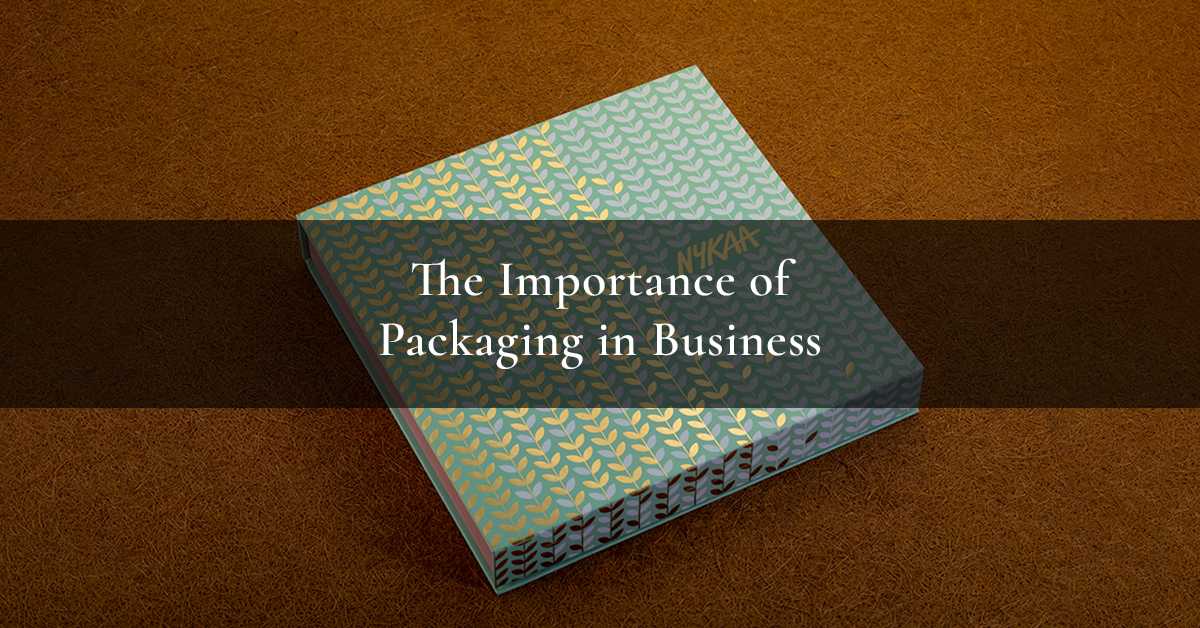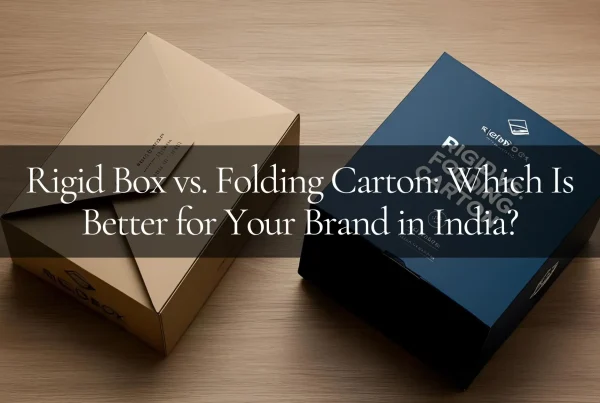In the world of business, packaging plays a crucial role in determining a product’s success. It is much more than just a container for the merchandise; packaging serves as a silent ambassador for the brand, influencing consumer behavior, and impacting business reputation.
Furthermore, as environmental concerns take center stage, sustainable packaging has become a key consideration for businesses looking to align with the principles of responsible consumption.
In this article, we will explore the multifaceted importance of packaging in business, examining its role in brand identity, consumer behavior, product perception, financial considerations, and future trends.
Understanding the Role of Packaging in Business
Before delving into the various aspects of packaging’s significance, it is essential to define packaging itself within a business context. Packaging refers to the materials and design elements used to protect, transport, and promote products.
It is the tangible representation of a brand’s values, positioning, and promise.
Defining Packaging in a Business Context
At its core, packaging serves as a protective layer, safeguarding products during transportation and storage. It encompasses materials such as boxes, bottles, wrappers, and labels, designed to keep the product intact and safe from external factors that could compromise its quality. But packaging does not stop at protection; it goes beyond functionality to become a tool for marketing and branding.
Moreover, packaging also plays a crucial role in ensuring the convenience and ease of use for consumers. Consider, for instance, the packaging of a snack product.
The design of the packaging should allow for easy opening and resealing, ensuring that consumers can enjoy the product without any hassle. This attention to detail enhances the overall user experience and strengthens the brand-consumer relationship.
Furthermore, packaging can also contribute to sustainability efforts. With the increasing global focus on environmental conservation, businesses are adopting eco-friendly packaging solutions. This includes using recyclable materials, reducing excess packaging, and incorporating biodegradable alternatives.
By aligning packaging practices with sustainability goals, businesses can not only meet consumer expectations but also positively impact the environment.
The Connection Between Packaging and Brand Identity
One of the most crucial roles packaging plays in business is its ability to convey brand identity. Every element of the packaging, from colors and fonts to imagery and messaging, should align with the brand’s values and visually communicate its essence.
A strong brand identity is instantly recognizable through its packaging, establishing a connection with consumers and differentiating the product from competitors.
For example, luxury brands often invest in premium packaging materials and elegant designs to reflect their high-end positioning. The use of embossed logos, metallic finishes, and luxurious textures creates a sense of exclusivity and sophistication, enticing consumers to choose their products over others.
On the other hand, brands targeting a younger demographic may opt for vibrant colors, playful illustrations, and innovative packaging formats to appeal to their target audience’s preferences and lifestyle.
In addition to brand identity, packaging can also serve as a storytelling medium. Through creative packaging design, businesses can convey the story behind their products, the inspiration behind their brand, or the unique journey of their creation process. This narrative-driven approach not only captivates consumers but also adds depth and meaning to the overall product experience.
Furthermore, packaging can act as a silent salesperson on store shelves. Eye-catching designs, strategic placement of product information, and clear messaging can attract the attention of potential customers and influence their purchasing decisions.
Effective packaging design can create a positive first impression, pique curiosity, and communicate the product’s benefits, ultimately driving sales and brand loyalty.
It is worth noting that packaging extends beyond the physical product. In the digital age, e-commerce packaging has gained significant importance. With the rise of online shopping, businesses must consider the unboxing experience and how their packaging will be perceived by customers who receive their products in the mail.
Unboxing videos and social media posts showcasing aesthetically pleasing and well-designed packaging have become popular, further emphasizing the impact of packaging on brand perception and customer satisfaction.
In conclusion, packaging plays a multifaceted role in business. It goes beyond protection and functionality to become a powerful marketing tool, conveying brand identity, enhancing user experience, and influencing consumer behavior.
As businesses continue to recognize the significance of packaging, they must invest in thoughtful and strategic packaging design to stand out in a competitive market and forge meaningful connections with their target audience.
The Psychological Impact of Packaging
When it comes to consumer behavior, packaging has a profound psychological impact. It influences purchasing decisions, evokes emotions, and shapes perceptions of product quality. Understanding these psychological factors allows businesses to leverage packaging as a powerful marketing tool.
How Packaging Influences Consumer Behavior
Humans are visual creatures, and packaging appeals to our senses. Research indicates that consumers are more likely to choose products with visually appealing packaging. Colors, shapes, and design elements can create a positive first impression, attracting attention and piquing curiosity.
For example, a study conducted by the University of California found that products with vibrant and eye-catching packaging were more likely to be noticed and considered by consumers. The use of bold colors, such as red or yellow, can create a sense of urgency or excitement, encouraging impulse purchases.
Similarly, unique shapes or innovative packaging designs can differentiate a product from its competitors, making it stand out on the shelves.
Furthermore, packaging that conveys the product’s key benefits and features can influence purchasing decisions, helping consumers form a perception of the item’s value.
Clear and concise information about the product’s ingredients, functionality, or eco-friendly attributes can create a sense of trust and credibility, increasing the likelihood of a purchase.
The Role of Packaging in Product Perception
Perception is everything when it comes to consumer goods. Packaging significantly influences how consumers perceive a product’s quality, authenticity, and value. A well-designed package can enhance the perceived value of the product, making it appear more premium or luxurious.
Consider, for instance, the packaging of high-end skincare products. These products often come in sleek, minimalist containers made of high-quality materials, such as glass or metal.
The weight and texture of the packaging can convey a sense of luxury, suggesting that the product inside is of superior quality. This perception can justify a higher price point and attract consumers who associate premium packaging with a premium product.
On the other hand, packaging that feels cheap or inconsistent with the brand’s image can undermine consumer trust and hinder sales. If a product is marketed as eco-friendly or sustainable, but its packaging is excessive or non-recyclable, consumers may question the brand’s authenticity and commitment to its values.
In such cases, the packaging becomes a barrier to purchase, as consumers seek products that align with their personal beliefs and values.
Moreover, packaging can evoke emotions and create a connection between the consumer and the product. For example, nostalgic packaging designs can tap into consumers’ memories and trigger positive emotions. This emotional connection can lead to increased brand loyalty and repeat purchases.
In conclusion, packaging plays a crucial role in consumer behavior and product perception. By understanding the psychological impact of packaging, businesses can create visually appealing designs that attract attention, convey product value, and evoke positive emotions.
Packaging is not just a container for a product; it is a powerful tool that can influence purchasing decisions and shape brand perception.
The Environmental Implications of Packaging
As awareness of the environment grows, businesses are increasingly expected to adopt sustainable packaging practices. Consumers are more conscious of the waste created by excessive packaging and the impact it has on our planet.
Embracing sustainable packaging not only benefits the environment but also contributes to a positive brand image and drives customer loyalty.
Sustainable Packaging and its Business Benefits
By utilizing sustainable materials, minimizing waste, and reducing carbon footprints, businesses can align their packaging with eco-friendly values. Sustainable packaging not only reduces environmental harm but also enhances a company’s reputation, attracting environmentally conscious consumers.
Moreover, it can lead to cost savings in the long run, as sustainable packaging can often be more efficient and economical.
The Impact of Packaging Waste on Business Reputation
Conversely, failing to address packaging waste can have severe consequences for a business’s reputation. Social media has provided consumers with a platform to voice their concerns and hold companies accountable for their environmental practices.
Instances of excessive packaging and non-recyclable materials can quickly go viral, tarnishing a brand’s image and damaging customer trust.
The Financial Aspects of Packaging
While packaging undoubtedly contributes to a company’s brand image and consumer appeal, it is crucial to consider the financial implications. Balancing cost considerations with effective packaging design can lead to increased sales and a healthy bottom line.
Cost Considerations in Packaging Design
Businesses must carefully manage packaging costs while maintaining quality and aesthetics. Achieving an optimal balance between cost, functionality, and visual appeal requires thoughtful planning and consideration of production processes and materials.
By optimizing packaging design and manufacturing, companies can reduce costs without compromising the perceived value.
How Effective Packaging Can Increase Sales
Effective packaging can be a significant driver of sales. Packaging that stands out on store shelves and communicates the product’s key benefits can capture consumers’ attention and prompt them to make a purchase.
In a crowded marketplace, creative and well-executed packaging can set a product apart, creating a positive impression and encouraging brand loyalty.
Future Trends in Business Packaging
As technology advances and consumer preferences evolve, the future of packaging holds exciting possibilities. Businesses that adapt and embrace emerging trends will gain a competitive advantage and stay relevant in an ever-changing marketplace.
Technological Innovations in Packaging
The integration of technology within packaging opens up new avenues for engaging consumers. Augmented reality, QR codes, and near-field communication (NFC) tags enable interactive packaging experiences, providing additional product information, storytelling, or even personalized messages.
This innovative approach can create memorable customer experiences and deepen brand engagement.
The Rise of Personalized and Interactive Packaging
Personalization is becoming increasingly important in the packaging industry. Tailoring packaging design, messaging, or even individualized products to specific target audiences can enhance the consumer experience.
Additionally, interactive packaging elements, such as peel-off games or puzzles, add an element of fun and engagement, making the brand memorable and building customer loyalty.
In Conclusion
Packaging is far more than a simple covering for products. It is a vehicle that communicates a brand’s promise, influences consumer behavior, and shapes perceptions.
With sustainability and technological advancements shaping the future, businesses must recognize the importance of packaging and leverage it effectively to create a lasting impact in the competitive business landscape.




